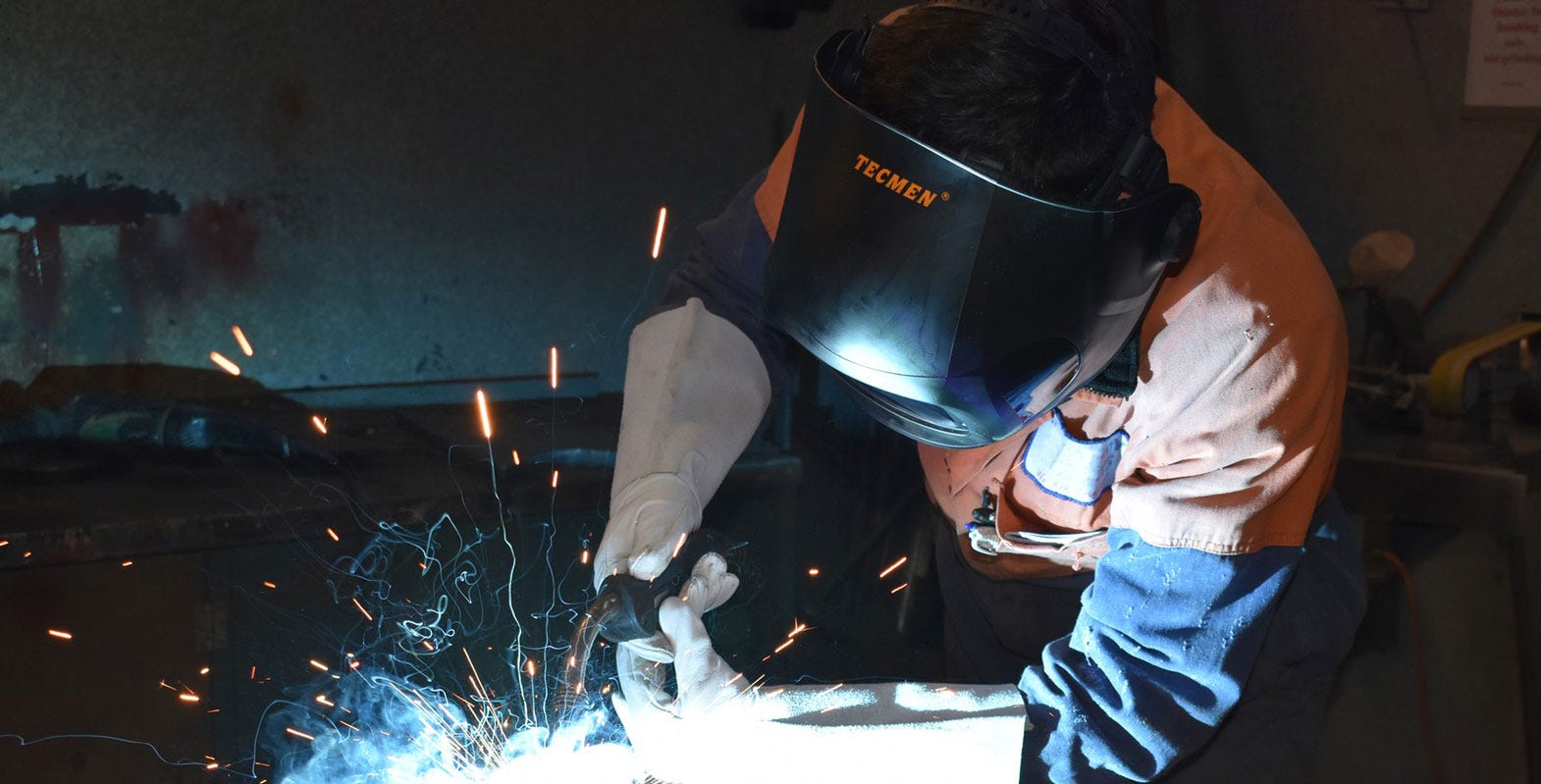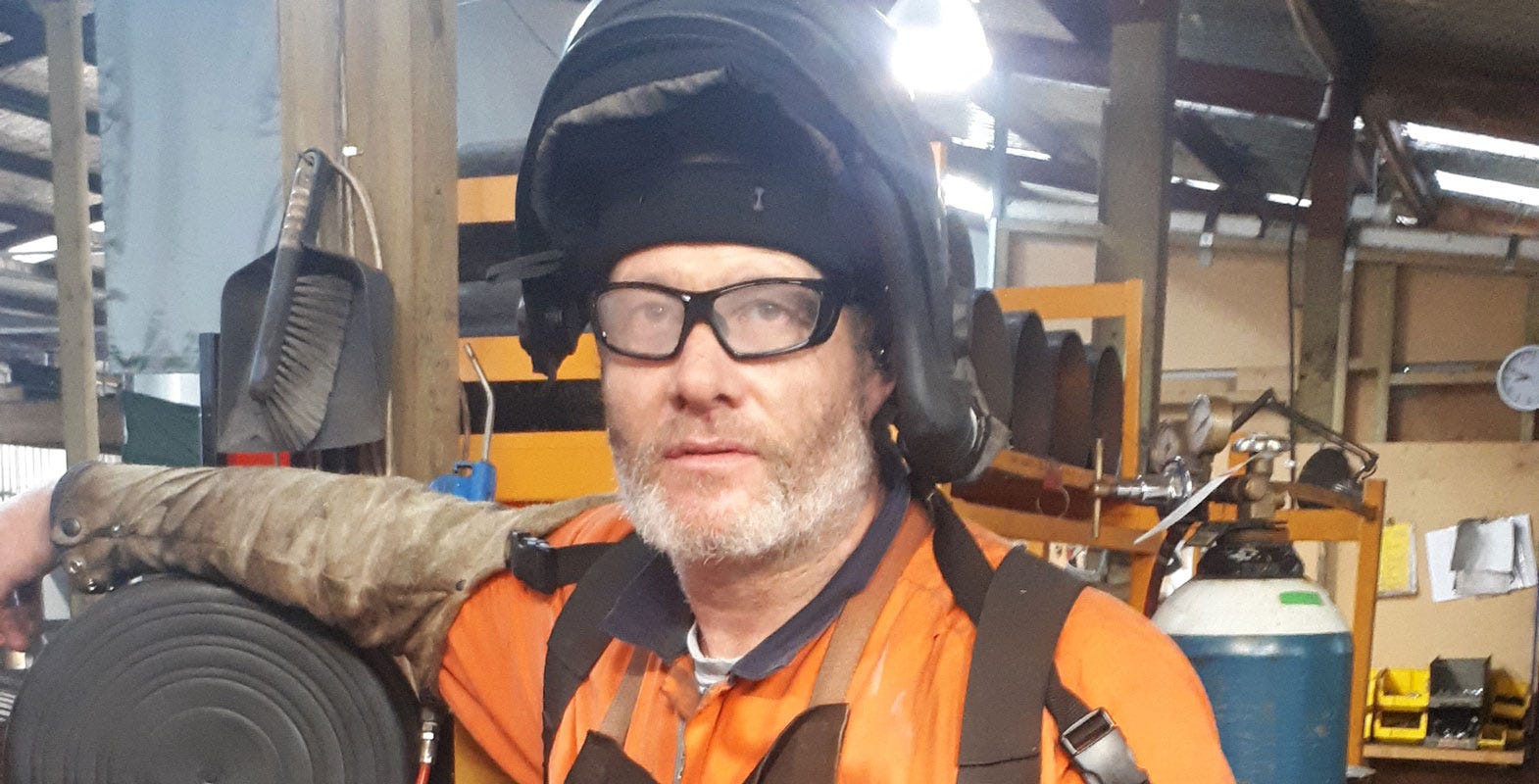What Flaw Finder Do I Need?
Chasing cracks, porosity, or hidden flaws? You need flaw finder. But which is best for your job? Let's find out...


As an engineer, choosing the right NDT (non-destructive testing) products is crucial for accurate flaw detection. This quick guide will help you find the right combination for your inspection needs.
Dye Penetrant Testing
What it is:
This test detects surface flaws (e.g., cracks, laps) on non-porous materials by applying a liquid dye that seeps into defects. After removing excess dye, a developer brings out the flaws for visibility.
Products to Use:
-
Sherwin DR-60 Cleaner/Remover: Cleans surfaces before and after the test, removing excess penetrant.
-
Sherwin DP-50 Dye Penetrant: A visible penetrant for detecting surface flaws on metals, ceramics, glass, and some plastics.
-
Sherwin D-100 Developer: Helps bring out trapped penetrant from surface flaws for clearer visibility.
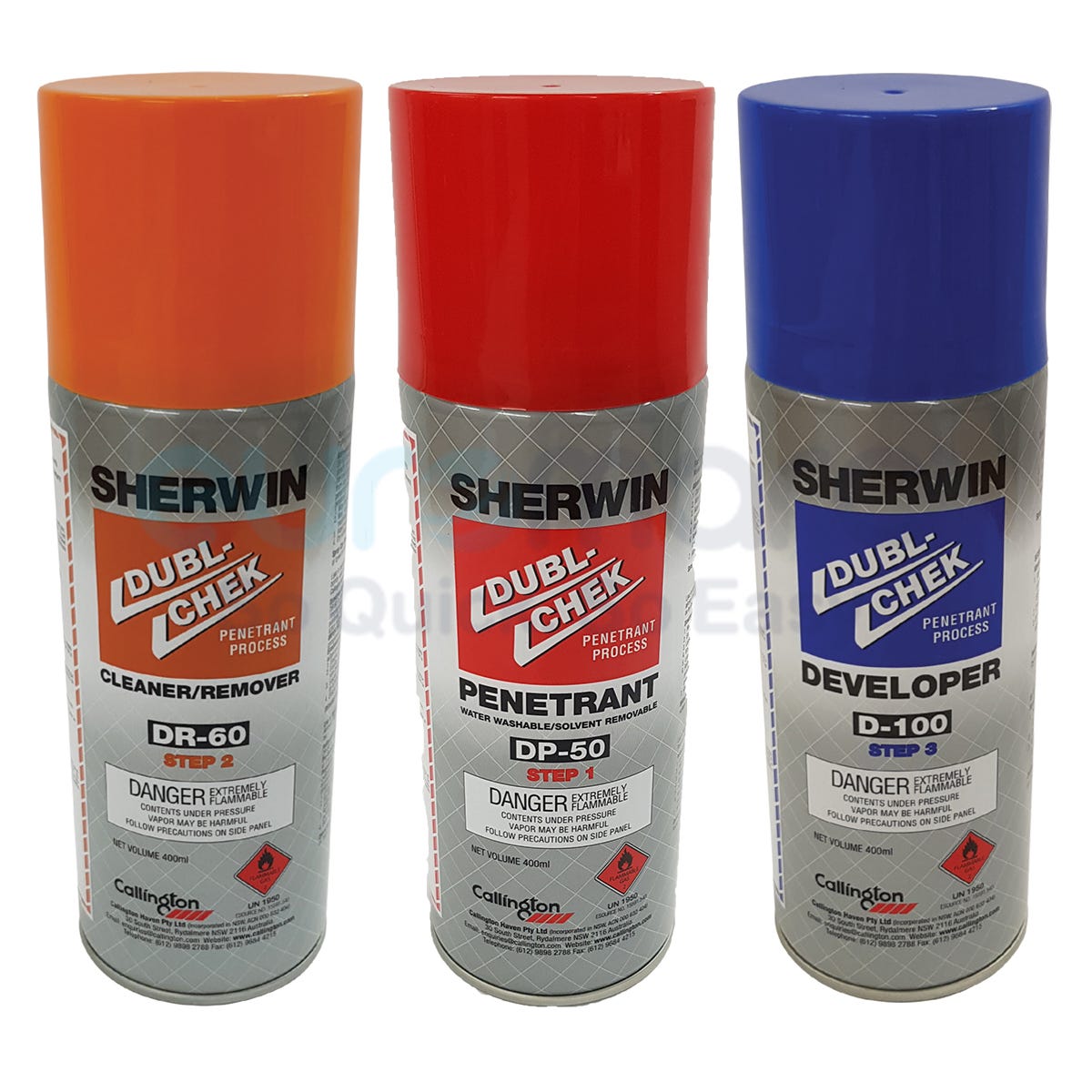

Magnetic Particle Testing
What it is:
Used to find surface and near-surface defects in ferromagnetic materials. A magnetic field is applied, and particles gather at flaw sites, making them visible.
Products to Use:
-
Sherwin BO-1 Magnetic Particle: Black particles for detecting surface flaws in ferromagnetic materials.
-
Sherwin CP-2 Contrast Paint: White paint that enhances particle visibility by providing a high-contrast background.
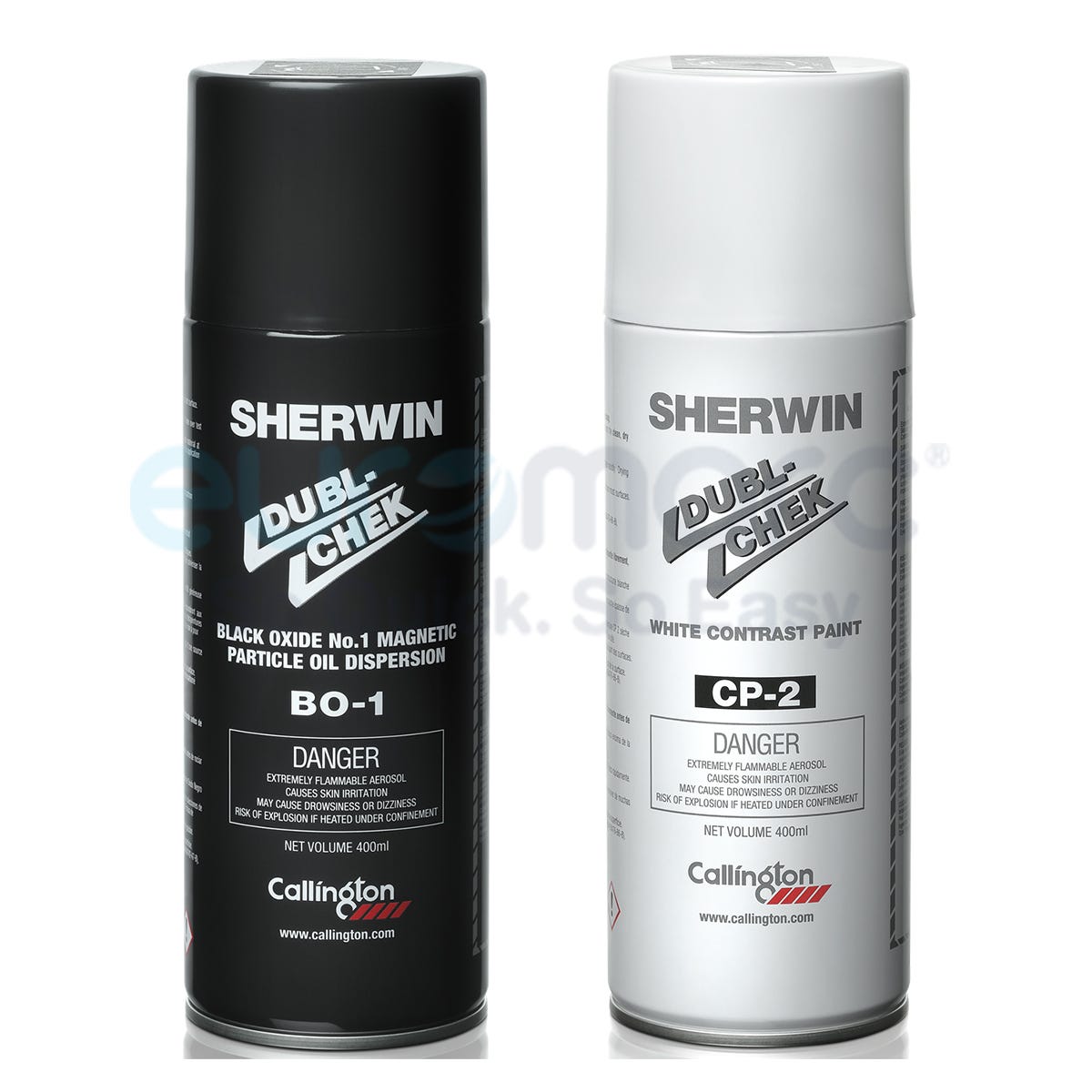

Fluorescent Magnetic Testing
What it is:
Similar to magnetic particle testing but uses fluorescent particles that glow under UV light, allowing for higher sensitivity and detection of finer flaws.
Products to Use:
-
Sherwin GLO-NETIC Fluorescent Magnetic Particle: Fluorescent particles for detecting fine discontinuities in ferromagnetic materials under UV light.
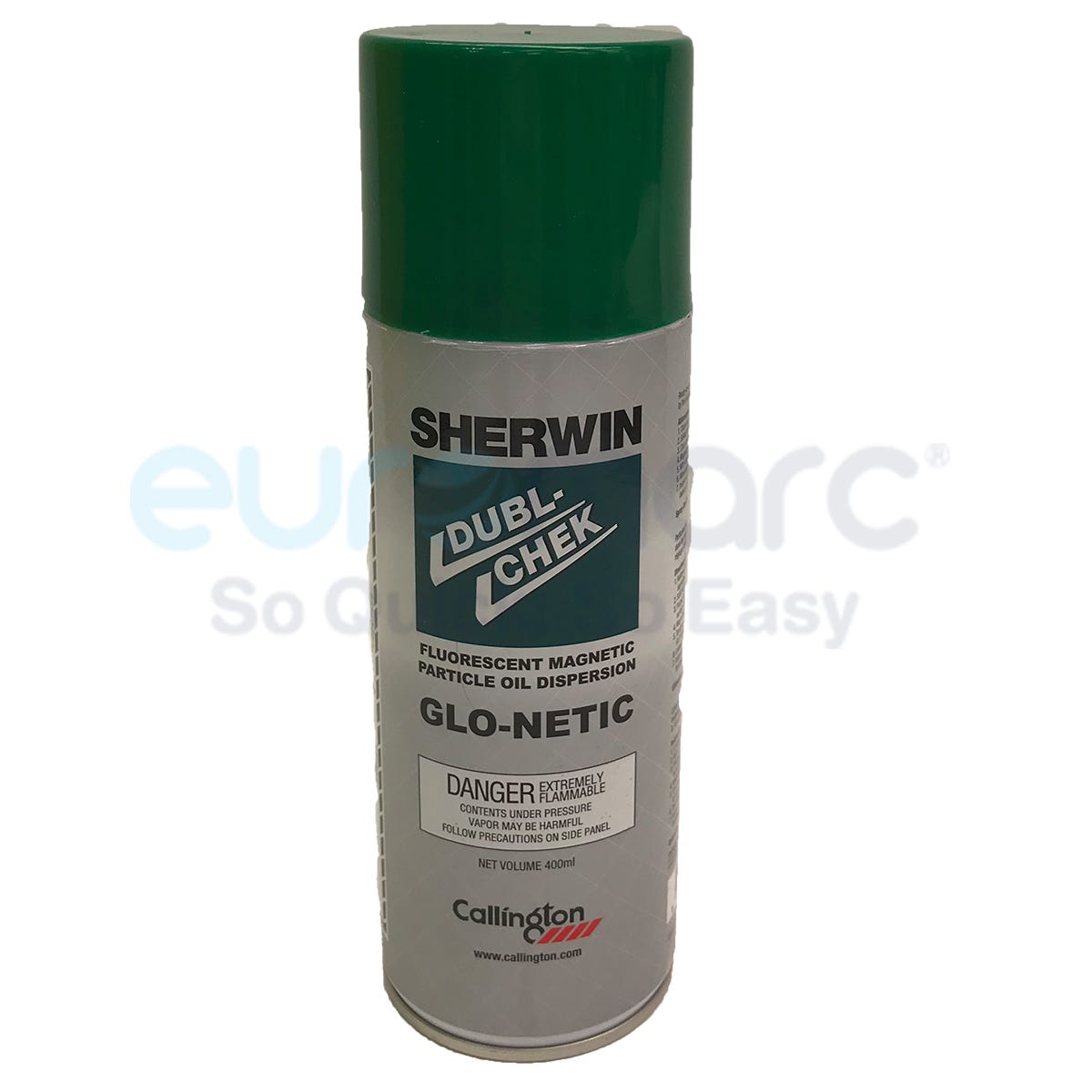

Hi-Temp Penetrant Testing
What it is:
This method is used to detect flaws at elevated temperatures (up to 176.7°C). The heat causes flaws to expand, trapping more penetrant for stronger indications.
Products to Use:
-
Sherwin KO-17 Hi-Temp Penetrant: A visible penetrant designed for high-temperature applications.
-
Sherwin D-350 Hi-Temp Developer: Enhances flaw visibility at high temperatures.
-
Sherwin KO-19 Hi-Temp Remover: Removes excess penetrant from heated surfaces after testing.
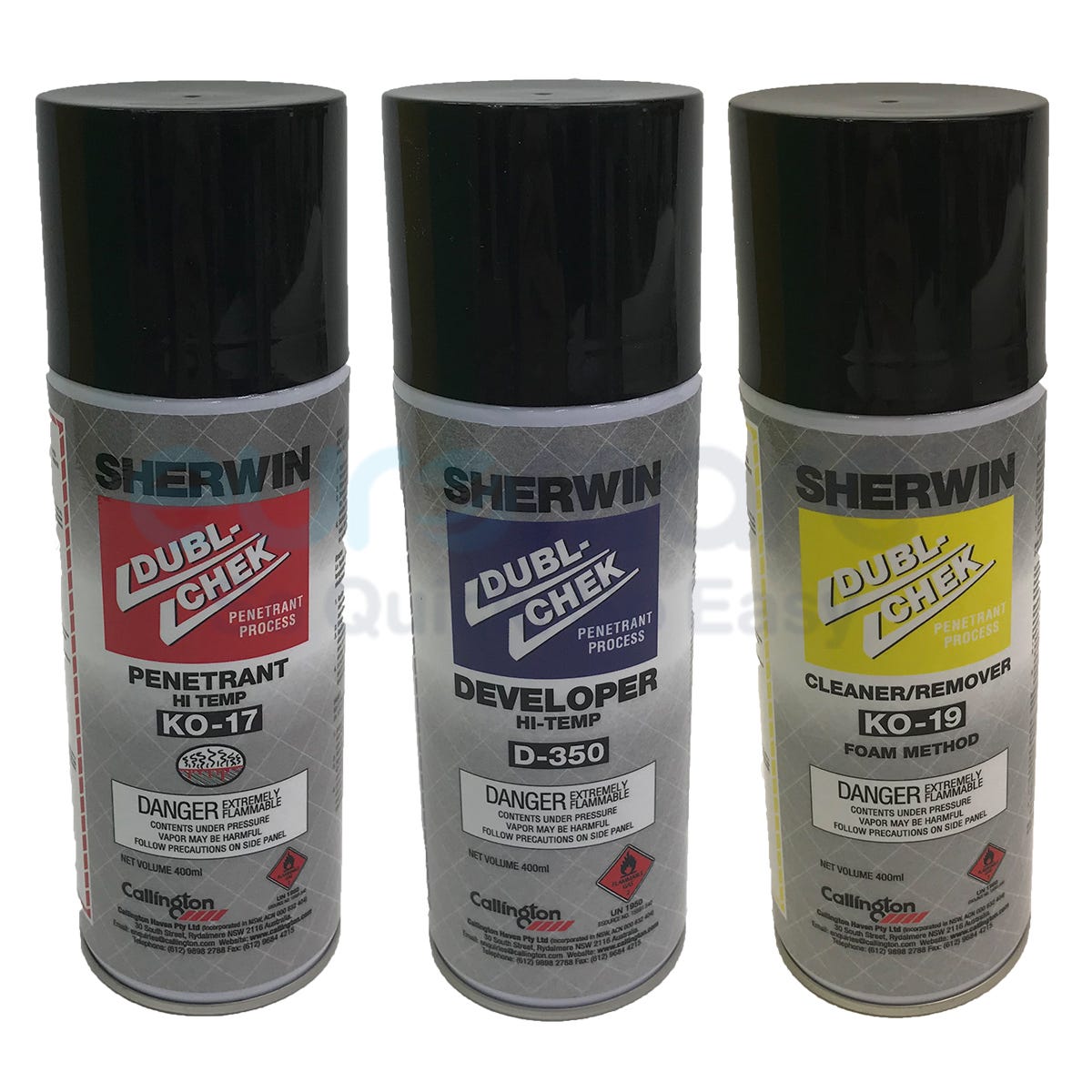

Quick Recap: How to Choose the Right Combination
| Application | Penetrant | Developer | Cleaner/Remover | Magnetic Particles | Contrast Paint |
| Visible Dye Penetrant Testing | DP-50 | D-100 | DR-60 | ||
| Magnetic Particle Testing | DR-64 | BO-1 | CP-2 | ||
| Fluorescent Magnetic Testing | Glonetic | ||||
| High-Temperature Penetrant | KO-17 | D-350 | KO-19 | ||
| Cleaning/Surface Prep | DR-60 / DR-64 |
Need More Information?
For more details or help in selecting the right combination, give us a call or contact our team at sales@euromarc.co.nz. We're here to help!
 Need assistance?
Need assistance?
